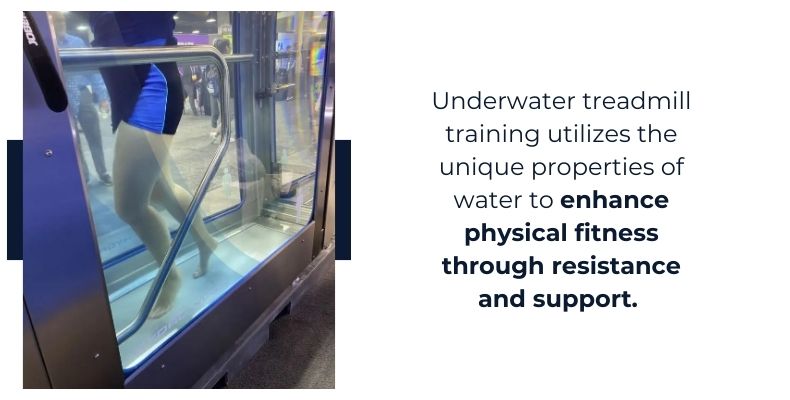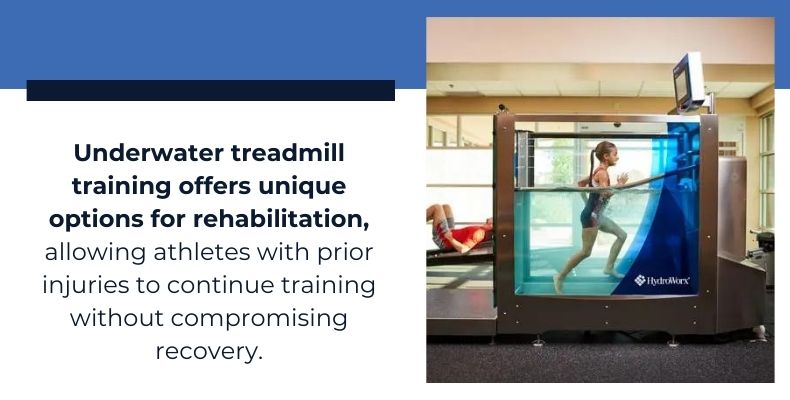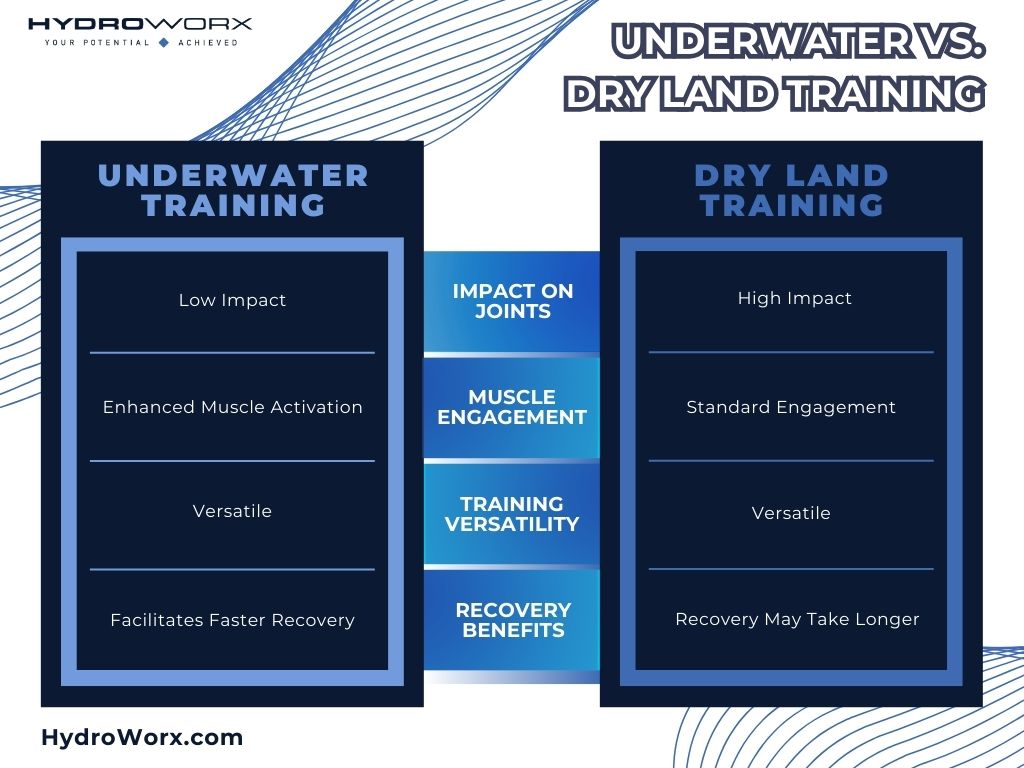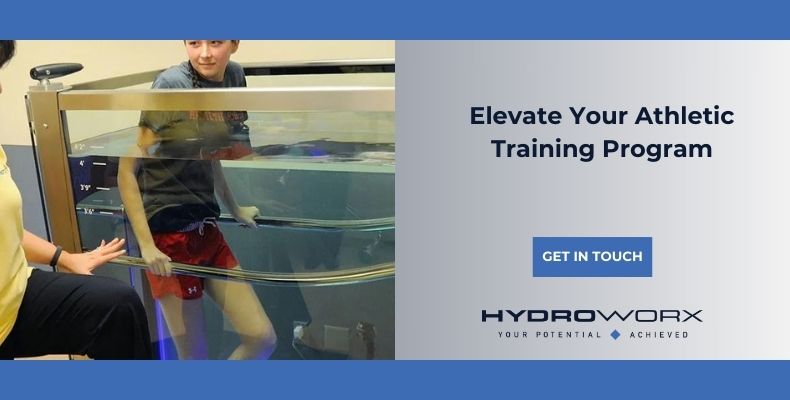Underwater Treadmill Training for Athletes: Building Strength and Endurance in Water
Underwater treadmill training is a revolutionary method for athletes looking to build strength and endurance while minimizing impact on their joints. By combining the benefits of traditional running with the unique properties of water, athletes can enhance their training regimens significantly. HydroWorx specializes in providing cutting-edge underwater treadmill equipment designed to optimize performance for athletes at all levels. This training method leverages water resistance to create an effective workout that challenges muscles without the strain associated with running on dry land. The buoyancy of water also supports the body, reducing the risk of injury and making it an excellent option for rehabilitation. As athletes strive for peak performance, underwater treadmill training presents an innovative solution to enhance strength, endurance, and recovery. In this article, we will explore the science behind this training method, its benefits, and how to effectively integrate it into training programs for athletes.

The Science Behind Underwater Treadmill Training
Underwater treadmill training utilizes the unique properties of water to enhance physical fitness through resistance and support. When athletes run on an underwater treadmill, they experience a combination of buoyancy and water resistance, creating a versatile training environment. The buoyancy reduces the gravitational load on the body, allowing for an effective workout with reduced impact on joints. This is particularly beneficial for athletes recovering from injuries, as it enables them to maintain fitness levels without exacerbating pain or harm.
Additionally, water resistance provides a natural mechanism for strength training, engaging muscles more thoroughly than traditional running. The drag created by water forces athletes to exert greater effort, thereby enhancing muscle strength and endurance with every step. This dual-action approach not only improves cardiovascular fitness but also supports joint health, making underwater treadmill training an excellent option for athletes looking to advance their performance while minimizing injury risks.

Key Benefits of Underwater Running
Underwater treadmill training offers numerous advantages that can significantly enhance an athlete’s performance and overall fitness. Some key benefits of underwater running include:
- Increased Muscle Strength and Power: The resistance of water challenges muscles in a way that land-based training may not, leading to greater strength gains over time. This is especially beneficial for athletes looking to improve power output and explosiveness.
- Improved Cardiovascular Endurance: Training in water can elevate an individual’s heart rate effectively while reducing perceived exertion, allowing athletes to push their limits without overstraining. This results in improved aerobic capacity and stamina.
- Enhanced Recovery and Injury Prevention: The low-impact nature of underwater treadmill training allows athletes to maintain their fitness while recovering from injuries or surgeries. The buoyancy alleviates pressure on joints, helping to prevent further injuries during intense training cycles.
- Mental Focus and Motivation: The unique settings and experiences of aquatic training can reinvigorate an athlete’s routine, encouraging greater focus and engagement. With varied sensory stimulation, athletes may find renewed motivation in their training.
By incorporating underwater running into their workouts, athletes can tap into these benefits and optimize their performance for both competition and health.

Comparing Underwater Treadmill Training to Dry Land Training
When comparing underwater treadmill training to traditional dry land workouts, several key differences and advantages become apparent. One of the primary distinctions is the impact of stress on joints. Underwater training reduces impact significantly—due to buoyancy—which lessens the risk of injury, making it ideal for athletes looking to maintain high-intensity workouts without the associated wear and tear on their bodies.
In contrast, running on land subjects joints to higher levels of impact and stress, increasing the chances of overuse injuries, particularly in lower-body areas. The natural resistance of water also provides a more comprehensive workout, engaging muscles more effectively than standard land-based exercises. Additionally, underwater treadmill training offers unique options for rehabilitation, allowing athletes with prior injuries to continue training without compromising recovery. While dry land workouts are essential for specific strength and endurance components, incorporating underwater training can significantly enhance an athlete’s conditioning while promoting recovery and reducing injury risk.
Designing an Effective Underwater Training Program
Creating an effective underwater training program requires careful planning and consideration of the athlete’s individual goals, fitness level, and specific sport demands. Here are some key components to consider:
- Assessment of Current Fitness Levels: Begin by assessing each athlete’s current fitness levels and goals. This information will guide the structure and intensity of the training program relevant to their needs.
- Structuring Workouts: Develop a balanced program that includes various intensities and durations. Incorporate interval training, endurance sessions, and speed work during underwater workouts. Use time-based intervals to ensure effective challenges and recovery.
- Emphasizing Strength Components: Include specific exercises focusing on strength, such as resistance running and lateral movements, to target critical muscle groups while promoting endurance and power.
- Monitoring Progress: Establish metrics to track progress, such as distance covered, heart rate responses, and workout intensity. Regularly reassess these factors to adjust the training program accordingly.
- Incorporating Recovery Protocols: Ensure that the program includes dedicated recovery days and hydration strategies to optimize training results. This balance is crucial for avoiding fatigue and maintaining performance consistency.
By carefully designing underwater training programs that consider these aspects, facilities can effectively enhance their athletes’ performance while promoting injury prevention and recovery.

Transform Your Training With HydroWorx
Elevate your athletic training programs with HydroWorx’s state-of-the-art underwater treadmill equipment. Our innovative solutions provide a unique, low-impact workout environment that enhances strength, endurance, and recovery for athletes of all levels. Whether you’re looking to improve performance, facilitate rehabilitation, or offer cutting-edge training options, HydroWorx has the ideal equipment to meet your facility’s needs. Don’t miss the opportunity to optimize your athletes’ training regimens and help them reach their full potential. Contact HydroWorx today to learn more about our underwater treadmill solutions and how they can transform your training approach!

